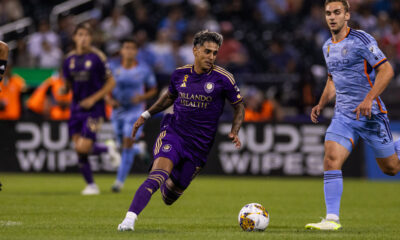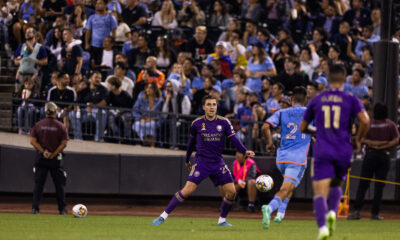Orlando City
Intelligence Report: Orlando City at Portland Timbers
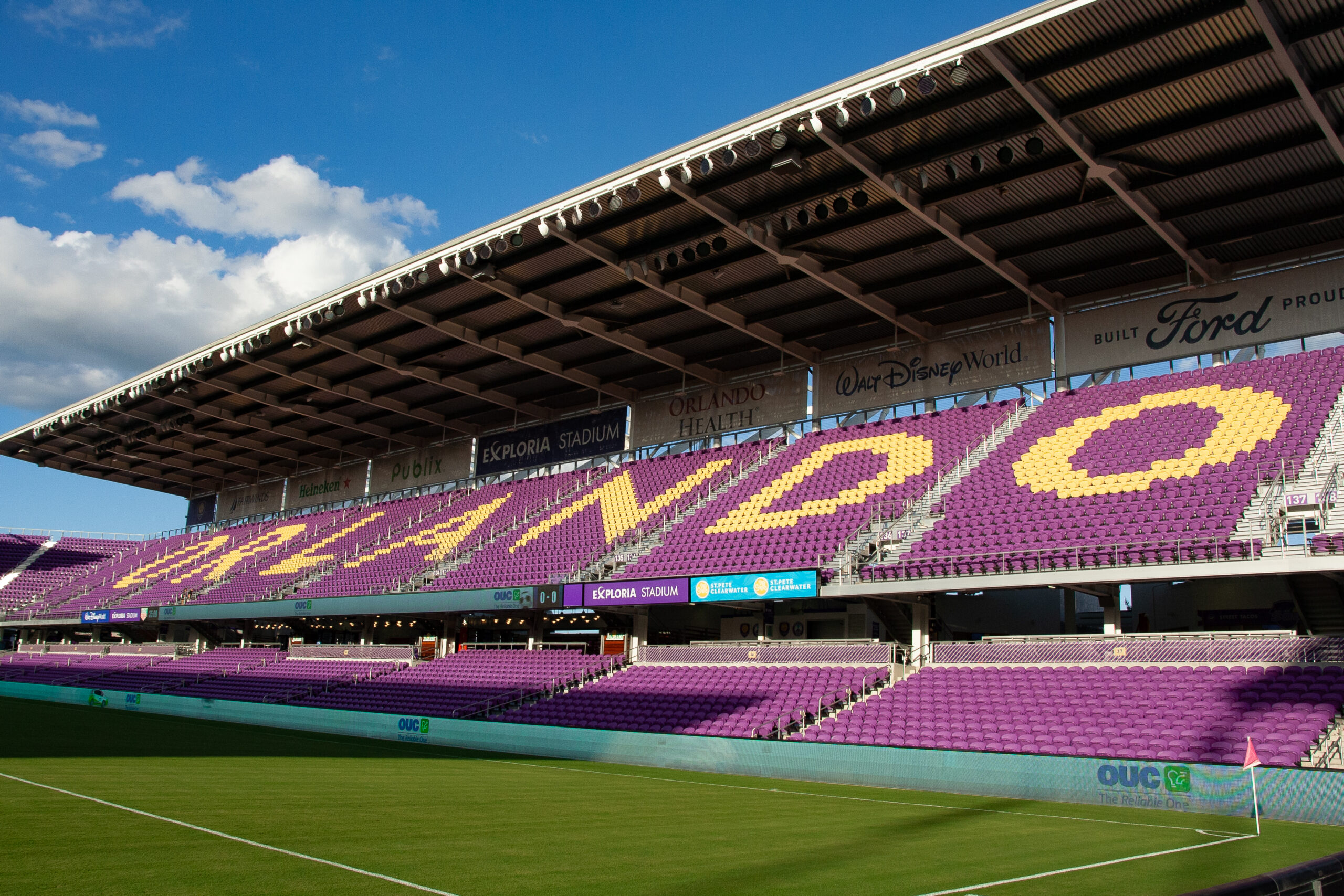
Orlando City hits the Pacific Northwest for the second time this season (following the 1-1 draw at Seattle back in June), as the Lions head to Providence Park for the one and only meeting with the Portland Timbers on Sunday.
Cyle Larin will have fond memories of his last visit to Providence Park, where he scored his first professional goal in a 2-0 win back in April of 2015. The Lions kept Timber Joey’s chainsaw silent that day, but doing that again will not be easy.
Here to tell us more about the Timbers is Will Conwell from SB Nation Portland blog, Stumptown Footy. I’ve answered their questions as well,and you can check those out over at their place.
It’s been a long time since these teams have played. What’s different about the 2017 Portland Timbers?
Will Conwell: The last time that the Portland Timbers faced off against Orlando City was the end of Caleb Porter’s 4-3-3, with Darlington Nagbe at holding midfield. Nagbe has since reprised his role as a No. 8, but it was that loss that truly convinced Timbers fans that the MLS Cup run was over and that 2016 was a new year.
In 2016, Lucas Melano was still the hope of the Timbers, a $5 million signing with speed to burn and the potential to be a star. Now Melano is out and Sebastian Blanco is in. Where Melano was an up and coming youngster, Blanco is a player in his prime; where Melano’s game was all-out attack, Blanco is a two-way player who gets stuck in on both sides of the ball; and where the enduring image of Melano is of him walking back behind the play (despite being instrumental in the Timbers’ 2015 cup run and win), the image of Blanco is always of a player getting stuck in.
In 2016, the Timbers had replaced the injured Liam Ridgewell with Jamaican mainstay and MLS journeyman Jermaine Taylor. This year, the Timbers brought in Congolese international Larrys Mabiala, a TAM signing, to shore up their back line. A strong, ball-winning center back, Mabiala has already proven his worth to the Timbers, helping to strengthen a back line that has had significant issues this year.
In 2016, the Timbers were still struggling to sort out a lineup that had been gutted by their cup run, losing left back Jorge Villafana and left winger Rodney Wallace to the ravages of the salary cap. Early 2016 was a downswing for the Timbers; now Orlando faces a Timbers side on the upswing.
Diego Valeri is always good but he seems to have found another gear in 2017. How has he evolved into a strong MVP candidate?
WC: Over the last two years following the Timbers’ MLS Cup win in 2015, Diego Valeri has transformed himself from a master playmaker (23 goals and 35 assists in 86 games from 2013-2015) into a scoring machine (32 goals and 16 assists in 58 games from 2016 to 2017). That transformation has come as a result of significant changes in both Valeri’s game and the game of the Timbers as a whole.
The changes in Valeri’s game can largely be traced back to the arrival of Fanendo Adi in 2014 and Valeri’s extended absence at the start of the 2015 season as he recovered from a torn ACL. With Valeri out, still recovering in the beginning of 2015, and Adi providing the focal point of the Timbers’ attack as he came into his own as a target forward, opening up space for those playing off him, the Timbers’ shape changed dramatically. Rather than three forwards making runs for their No. 10 in the center of the pitch, the Timbers were now two wingers making runs off of their No. 9 and an attacking midfielder with space in which to work on the edge of the area, as Adi drew in two or three defenders at a time with his hold-up play.
With that sort of black hole for defenders at the top of the Timbers’ formation opening up space, it only made sense for Diego Valeri to shoot, rather than looking for the weighted pass with which he had prospered in his early days with the Timbers. Thankfully for Timbers fans, Valeri is very good at shooting.
Now focused on taking advantage of that space, rather than simply making space for others, Valeri changed his game up. And as the Timbers continued to mold their play around strong hold-up from their forwards, it paid off.
What tactics have been successful for teams who have taken points against Portland this season both on offense and defense?
WC: The Timbers have allowed a lot of goals this year, so narrowing it down is difficult on the defensive side of the ball, but even so there are three approaches that teams have taken this season that stick out.
First, the Timbers have struggled under high pressure at times this season. While the back line looks much improved from where it was in the middle of the season, the Timbers have still shown some significant cases of nerves when put under aggressive pressure from opposition forwards. (Hello, Dom Dwyer.)
Perhaps this is down to the team’s constantly rotating back six failing to gel — injuries, call ups, and suspensions have wreaked havoc on the Timbers this year — but that the sort of silly, errant passes under pressure are still happening this late in the season is a source of worry. Liam Ridgewell is certainly still in need of time to settle in after his most recent extended absence due to injury, but Timbers backups Roy Miller and Lawrence Olum have each seen plenty of minutes this year.
Second, the Timbers have shown a propensity for giving up free kicks, getting unsettled, and failing to clear the ball in a timely fashion. This is a far more erratic aspect of the Timbers’ game and one that seems to surface at the most unseemly of times. While the back line’s struggles elsewhere can be blamed on familiarity, this seems more like an organizational issue.
Neither Jake Gleeson nor Jeff Attinella have looked particularly impressive in goal this year and a large part of that has come in these sorts of situations, sometimes failing to punch or grab a free kick into the box, or getting caught up in the chaos of the scrum. This would be less of an issue if the Timbers had a more vocal presence on the back line, but the side’s captain, Ridgewell, has been in and out of availability all year.
Finally, when it comes to shutting down the Timbers attack — particularly without Adi on the pitch — nothing beats packing it in and daring the Timbers to cross the ball. While the Timbers do have the highest scoring attack in the Western Conference, without Adi to toss around opposing center backs like leaves on the wind everything becomes just a little bit harder for everyone else on the team.
Denying space to Valeri is difficult but doable, but denying Darlington Nagbe and Sebastian Blanco space to work the ball into the box is much easier. Both players are capable of uncorking a shot from distance, but Nagbe has been notoriously goal-averse in recent seasons and Blanco seems to still be finding his legs in MLS, although five goals and seven assists as a first-year winger is nothing to scoff at. Without Adi to draw players away and create space, even the energetic runs of Darren Mattocks are rarely able to open up a gap for the Timbers’ wide players to squeeze through.
Injuries?/Suspensions?/Projected Starting XI?/Score Prediction?
WC: Injuries — Out: Gbenga Arokoyo, Chance Myers, Marco Farfan; Questionable: Jeff Attinella, Vytas Andriuškevičius, Fanendo Adi, David Guzman.
Suspensions — None.
Projected starting XI — Jake Gleeson; Vytas Andriuškevičius, Liam Ridgewell, Larrys Mabiala, Zarek Valentin; David Guzman, Diego Chara; Sebastian Blanco, Diego Valeri, Darlington Nagbe; Darren Mattocks.
Prediction — 2-1, Portland.
Big thanks to Will from Stumptown Footy for taking time out to give us some background on the Timbers.

Lion Links
Lion Links: 7/26/24
Orlando City plays CF Montreal tonight, USWNT wins against Zambia, Marta provides assist in Brazil’s win, and more.
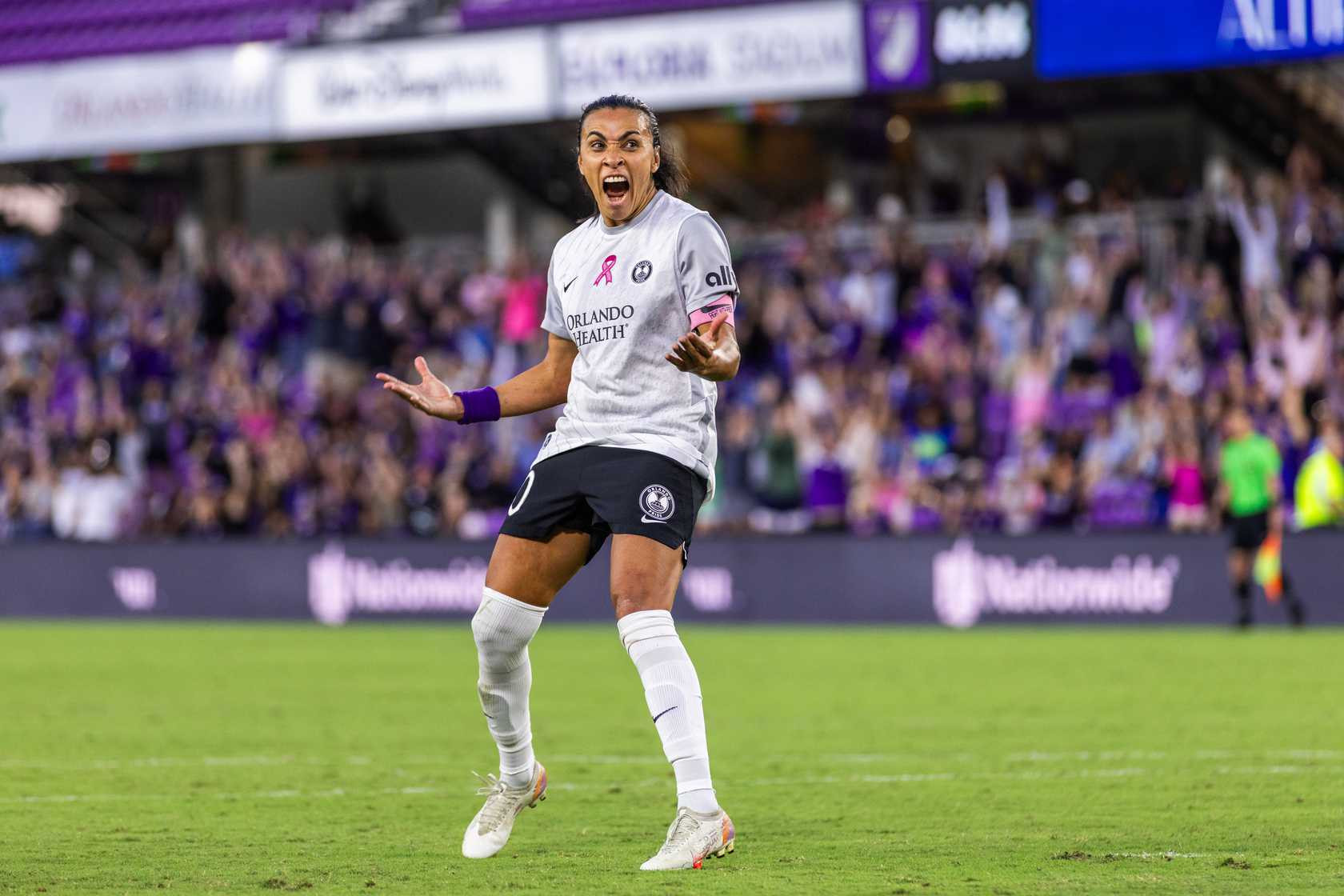
Happy Friday! I hope the work week has gone easy on you as we get ready for a weekend filled to the brim with soccer to enjoy. The Olympic opening ceremony is also today, and I’m interested to see what the organizers in Paris have come up with. But for now, let’s get this Friday started with today’s links!
Orlando City Takes On CF Montreal Tonight
The Leagues Cup kicks off today and Orlando City will host CF Montreal tonight in its first of two group games. The Lions will then take on Atletico de San Luis on Aug. 4. It’s worth noting that these games will go into a penalty shootout if the score remains level after 90 minutes, with the winner of the shootout getting an extra point. The top two teams of each group advance to the next round and Orlando will play the Philadelphia Union, Cruz Azul, or Charlotte FC if it survives the group stage.
USWNT Beats Zambia in Summer Olympic Opener
The United States Women’s National Team started its Olympic campaign with a dominant 3-0 win against Zambia. The USWNT’s attack looked free and dangerous, with Trinity Rodman striking first and Mallory Swanson scoring twice in quick succession to give the USWNT a comfortable lead. Those goals also came before Zambia was reduced to 10 players after a red card to Pauline Zulu. The Orlando Pride’s Barbra Banda and Grace Chanda both started for Zambia, although Chanda was subbed out in the first half when Zambia had to make changes due to the red card.
There is some bad news along with the good for the USWNT though. Jaedyn Shaw missed out on playing in the opener due to a leg injury, and Sophia Smith had to exit in the 42nd minute.
Marta Assists in Brazil’s Olympic Win
The USWNT was far from the only team to win its first game of this year’s Olympics, as there were no draws after the first round of games. Pride star Marta provided the assist on Brazil’s only goal in a 1-0 win over Nigeria. Marta did well to pick out Gabi Nunes from a tough angle, and the striker had a great first touch and strike to put it away. Pride defender Rafaelle helped secure the shutout, with Brazilian goalkeeper Lorena coming up with huge saves as well. Elsewhere in Group C, Spain’s Aitana Bonmati had a goal and an assist in her team’s 2-1 win against Japan.
New Zealand struck first against Canada in Group A, but the Canadians rallied to come back and win 2-1. France scored three goals in the first half and survived a rally from Colombia in the second half to win 3-2. Germany may have had the most impressive win so far, beating a talented Australian side 3-0.
Analyzing New Zealand Ahead of Olympic Clash
The United States Men’s Olympic Soccer Team will aim to bounce back from a loss to France when it faces New Zealand on Saturday. New Zealand beat Guinea in its first game and is coached by Darren Bazeley, who led New Zealand to the knockout stage of the 2023 U-20 World Cup. Minnesota United center back Michael Boxall and Viking FK midfielder Joe Bell are two of New Zealand’s overage players and give the team some stability. Goalkeeper Alex Paulsen, who joined Bournemouth this summer, is capable of coming up with acrobatic saves to give the U.S. fits as well. As for New Zealand’s attack, midfielder Sarpreet Singh and striker Ben Waine are a couple of the dynamic players the U.S. will have to keep in check.
Bev Priestman Removed From Canadian Olympic Team
Canada will have to go the rest of the Olympics without Head Coach Bev Priestman, who was removed from the team by the Canadian Olympic Committee. This decision comes amid a scandal involving spying on New Zealand’s training, which led to Canada Soccer suspending Priestman for the rest of the tournament. Reports have also surfaced that Canada’s men’s and women’s teams have tried to spy on opponents for years, including during the women’s team’s winning campaign in the 2021 Olympics. Only time will tell if Priestman will coach the team after this tournament and if punishments for the team’s actions will be handed out.
Free Kicks
- Orlando City’s Kaleb Harrington received the Spirit of Fair Play Award for his role in the Special Olympics Unified Sports All-Star Game. The East All-Stars were victorious as well, winning 5-0 against the West All-Stars.
- Chicago Red Stars defender Sam Staab was placed on the season-ending injury list after suffering a torn Achilles in the team’s Summer Cup match against NJ/NY Gotham FC.
- FC Cincinnati has signed Chidozie Awaziem from Boavista in Portugal’s top flight to help fill the club’s need at center back due to injuries to Matt Miazga and Nick Hagglund.
- Paraguayan center back David Martínez joined Inter Miami on loan from River Plate. The loan lasts through July of next year and also includes a purchase option.
- San Diego FC signed center back Patrick McNair as its fifth player before taking the field next year. McNair will spend the rest of 2024 on loan with West Brom.
- Minnesota United signed midfielder Joseph Rosales to a new contract that will keep him in Minnesota through 2027, with an option for 2028 as well. The 23-year-old is having a breakout year of sorts for the Loons, recording 10 assists in 21 appearances.
- Paris Saint-Germain is reportedly willing to pay Spanish winger Nico Williams double what Barcelona would pay the 22-year-old in order to sign him.
That’s all I have for you today. I hope you all have a fantastic Friday and rest of your weekend. Enjoy the Olympics!
Orlando City
Orlando City’s 2024 Offensive Blueprint (So Far)
An evaluation of how Orlando City has been trying to score goals in 2024.
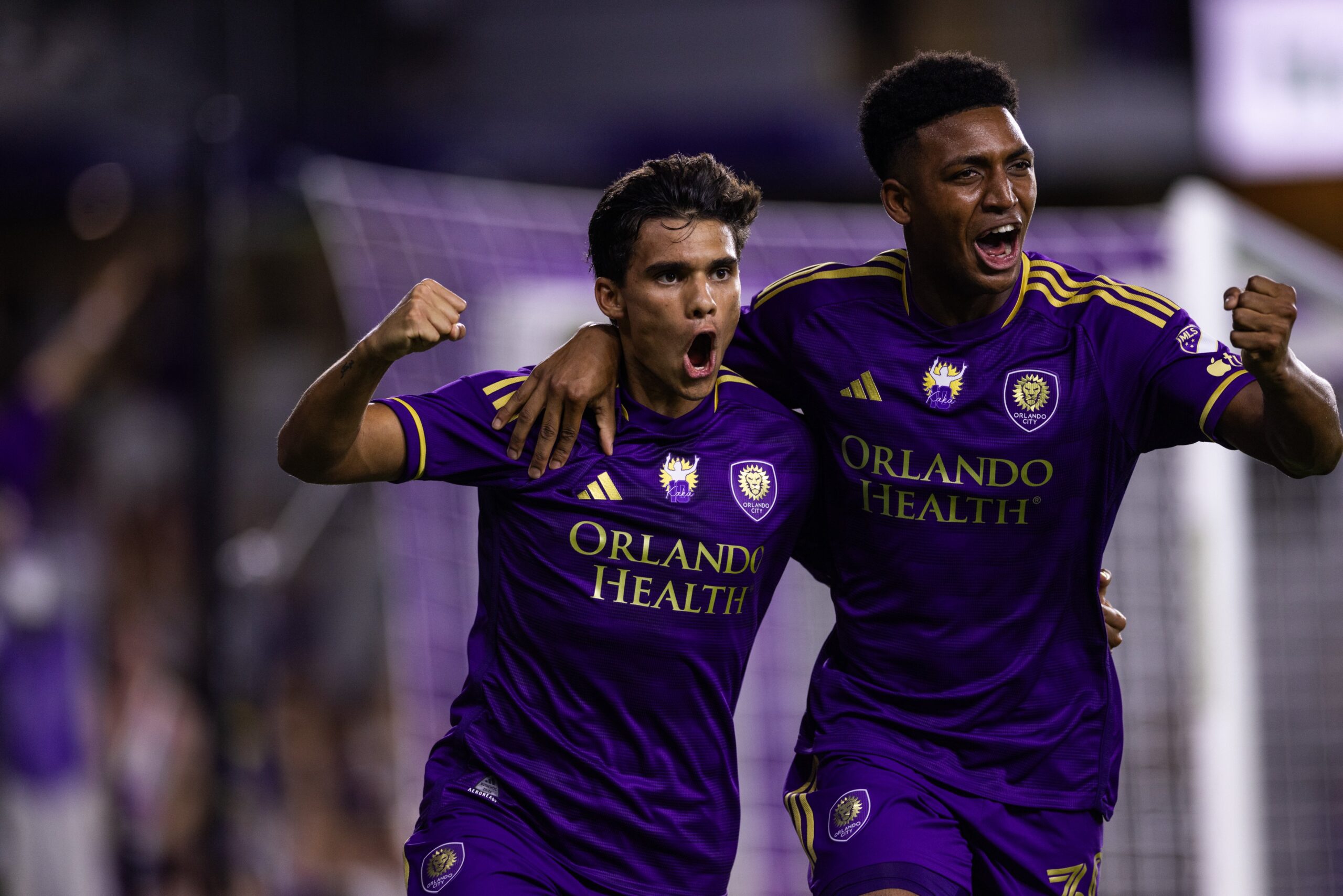
Jay-Z released one of my all-time favorite albums, The Blueprint, in 2001. With apologies to him, and his track on that album called “Girls, Girls, Girls,” what we as fans want are goals, goals, goals, and we want our team to score as many of them as possible. In this article I will explore Orlando City’s attacking style — some might say their attacking…blueprint — thus far this season and evaluate how the Lions have been trying create those goals we do adore.
All right, now that we have pushed the limit on puns and wordplay about that album, let’s look at some numbers related to Orlando City’s offense. First, let’s start with the direction of play, because Orlando City has a very clear plan of attack in 2024, and it involves the left side. According to the tracking from whoscored.com, Orlando City attacks down the left side on nearly half of its possessions.
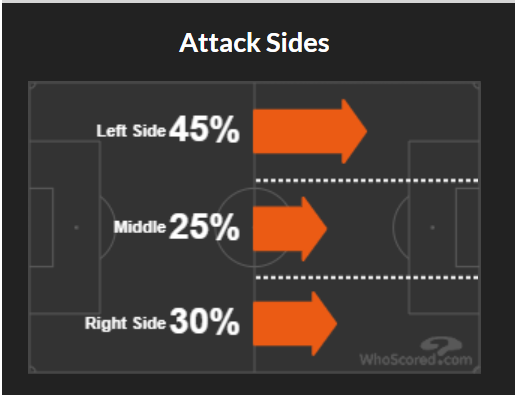
No team in MLS favors one side of the field as frequently as Orlando City’s 45% on the left side, and it is interesting that it is so high down the left because Facundo Torres, generally regarded as the squad’s most creative and dangerous player, plays most frequently on the right side of the field. I think there are three primary reasons for the left side favoritism:
- Iván Angulo is one of the fastest players in MLS and spends most of his time on the left side of the field, so the team tries to get him into space so he can use that speed to get the defense on its heels.
- Orlando City has three left-footed players who love a cross so much I am surprised they play for Orlando City and not Vatican City. Rafael Santos averages 5.1 crosses per 90 mins (27th in MLS), Nico Lodeiro averages 5.6 (16th), and Martín Ojeda averages 9.61 (second). Ojeda has been playing more centrally recently, but he still drifts to the left frequently. Lodeiro does the same, and Santos nearly exclusively stays on the left side. All three of them are crossing machines.
- Torres loves to cut back into the middle from his normal slot on the right side of the field, and so crossing it from left to right gives him space to operate, as the defense has to recover on a switch of field, and a scrambling defense against a talented attacking player is advantageous for Orlando City. Torres is fifth in MLS in receiving passes from 10+ yards away in the offensive area of the field, and his per-90-minute average for those receptions has increased from 2022 (8.4) to 2023 (9.8) to 2024 (11.4). Additionally, here is Facu’s shot chart for the year, courtesy of fotmob.com, and you can see that of his seven non-penalty-kick goals, all of them come from the right half of the field (his most recent goal against New England is highlighted with the red circle, because after a few minutes I gave up on trying to figure out how to show this without having one highlighted):
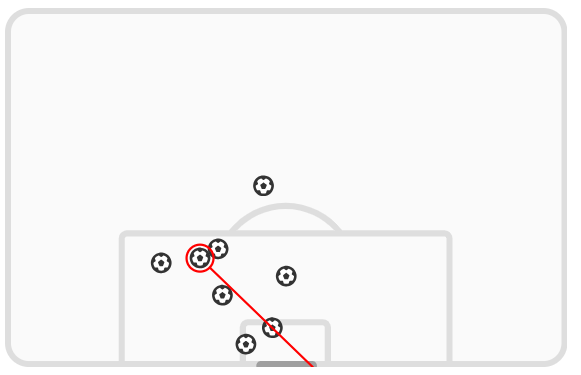
Expanding a little bit off of the direction of play, but returning to the second item in the list above, Orlando City leads all of MLS with an average of 21.32 crosses per 90 minutes. The other 28 MLS teams average 16.6 crosses per 90 minutes, so Orlando City is crossing the ball 28% more frequently than the average MLS team. The Lions have a physical presence in Duncan McGuire in the middle, so this makes sense to target him with crosses into the 18, and in fact the team is fourth in MLS this season with an average of 2.4 completed crosses into the penalty areas per 90 minutes.
It is not just Duncan though, of the 36 goals Orlando City players have scored this season (the other three are own goals), nine of them have come on a header and by eight different players. That 25% of goals scored on a header is the highest percentage for any Orlando City team in fbref.com’s tracking (goes back to 2018) and ranks the team only behind Austin FC’s 29% in MLS this season.
All crosses do not necessarily end in headers, but nearly all headers come from crosses, and the irony of the fact that Orlando City is scoring a high percentage of its goals from headers is that the Lions rank, to use a technical term, DFL in the league in percentage of aerial balls won (40.1%, and the next lowest is 45.4%). It’s kind of like the tagline to those Most Interesting Man in the World beer commercials from Dos Equis — the Lions don’t often win aerial balls, but when they do, they score goals.
Flipping from balls in the air to balls that are generally played on the ground, according to the data tracked by Opta on fbref.com, Orlando City is seventh in MLS in completed through balls per 90 minutes with an average of 1.5. The Lions have been in the top third of MLS in four of the last five seasons in this statistic, as this is clearly a staple of an Óscar Pareja-coached squad.
If you look at the individual MLS players who are leading the league in completing these dangerous balls, it is a veritable who’s who of creative players across the league. Say what you will about Luis Muriel, and I wrote a whole article about him a few weeks ago, but his passing ability is excellent, and it did not surprise me at all to see him high on this list and among the other well-known names. Here are the top 15, which also includes Lodeiro, among players who have played at least 500 minutes:
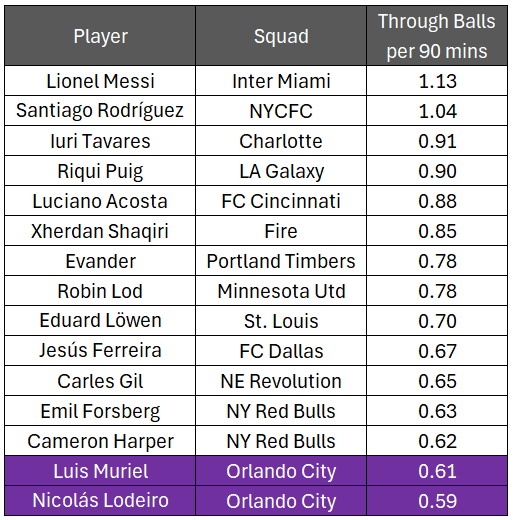
I touched on the left side focus earlier and how Angulo’s speed plays a large role in why the team plays more frequently down the left side, and that comes into play here as well with Orlando City’s predilection for playing through balls. It is also now time for Dagur Dan Thórhallsson to enter the chat, because he is just as much of a through ball target as Ruan was for several years in making speed runs up the right side of the field, and he ranks 24th among defenders in goal-creating actions per 90 minutes (0.24). Coincidentally, he also ranks 24th in shot-creating actions per 90 minutes (2.0). McGuire is also a target for these through balls as he makes excellent shallow runs behind defenders to then run onto balls played in front of him, and Ramiro Enrique is also pacey enough to do the same.
The completed crosses and through balls, as well as the fact that Orlando City is in the top 10 in total completed passes per 90 minutes, contribute to the team leading MLS with 10.1 completed passes into the penalty area per 90 minutes. The rest of MLS averages only 8.4, so Orlando City’s offensive tactics puts the team 20% higher than the rest of the league in terms of its frequency of completing passes to teammates inside the box.
Now, what teams want are goals, not completed passes into the penalty area, but you can see what the Lions are trying to do offensively by looking what these numbers reveal about how they are directing their attacking play.
Orlando City has a burner on the left (Angulo) and also several left-footed players who have the ability to whip in a dangerous cross (Ojeda, Lodeiro, Santos), so the focus is more on going down the left than the middle or the right. The Lions do have a fullback (Thórhallsson) with pace on the right too, so he is a target when they go right, and as a former midfielder, he has the ability to create offense coming forward, so he does with great frequency. The best finisher (Torres) is out on the right but loves to cut back to his left, and this year there is a higher focus on getting him the ball in space as opposed to having him leading the buildup.
Three players (Ojeda, Lodeiro, Muriel) are sharing the 10 role and releasing through balls to the outside and inside threats, and McGuire and Enrique are essentially serving as soccer versions of a basketball rim runner, attacking the goalmouth and trying to score in any way possible.
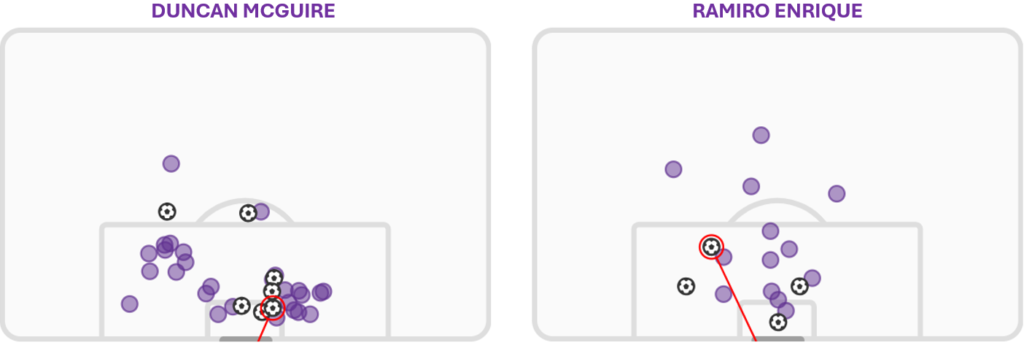
It all sounds great on paper, but for much of the season the offense was sputtering — so much so that Orlando City has scored more goals in the last seven games (20, 2.9 goals per game) than it did in its first 18 games (19, 1.1 goals per game). The first half of the season contained several issues that I believe contributed heavily to the low goal-scoring output, with several injuries, games missed for international duty, and competing in Concacaf Champions Cup at the same time as the start of the regular season, forcing squad rotation and players playing outside of their normal positions.
There was also just some poor play during those early months as well, some self-inflicted poor performances. I believe that Orlando City has found something though in the last few weeks, and while the Lions may not score 2.9 goals per game for the rest of the season, I think that what we have seen recently is a settled team of players who know their roles and understand the strategy, and who have the ability to execute that strategy.
Just 17 years after it was released, Jay-Z’s The Blueprint was selected by the Library of Congress for preservation in the United States National Recording Registry for being “culturally, historically, or aesthetically significant.” Let’s hope that 17 years from now, in 2041, we are all looking back fondly on what became an athletically significant 2024 season for Orlando City.
Orlando City
Orlando City vs. CF Montreal: Three Keys to Victory
What do the Lions need to do to get a victory to start the Leagues Cup?
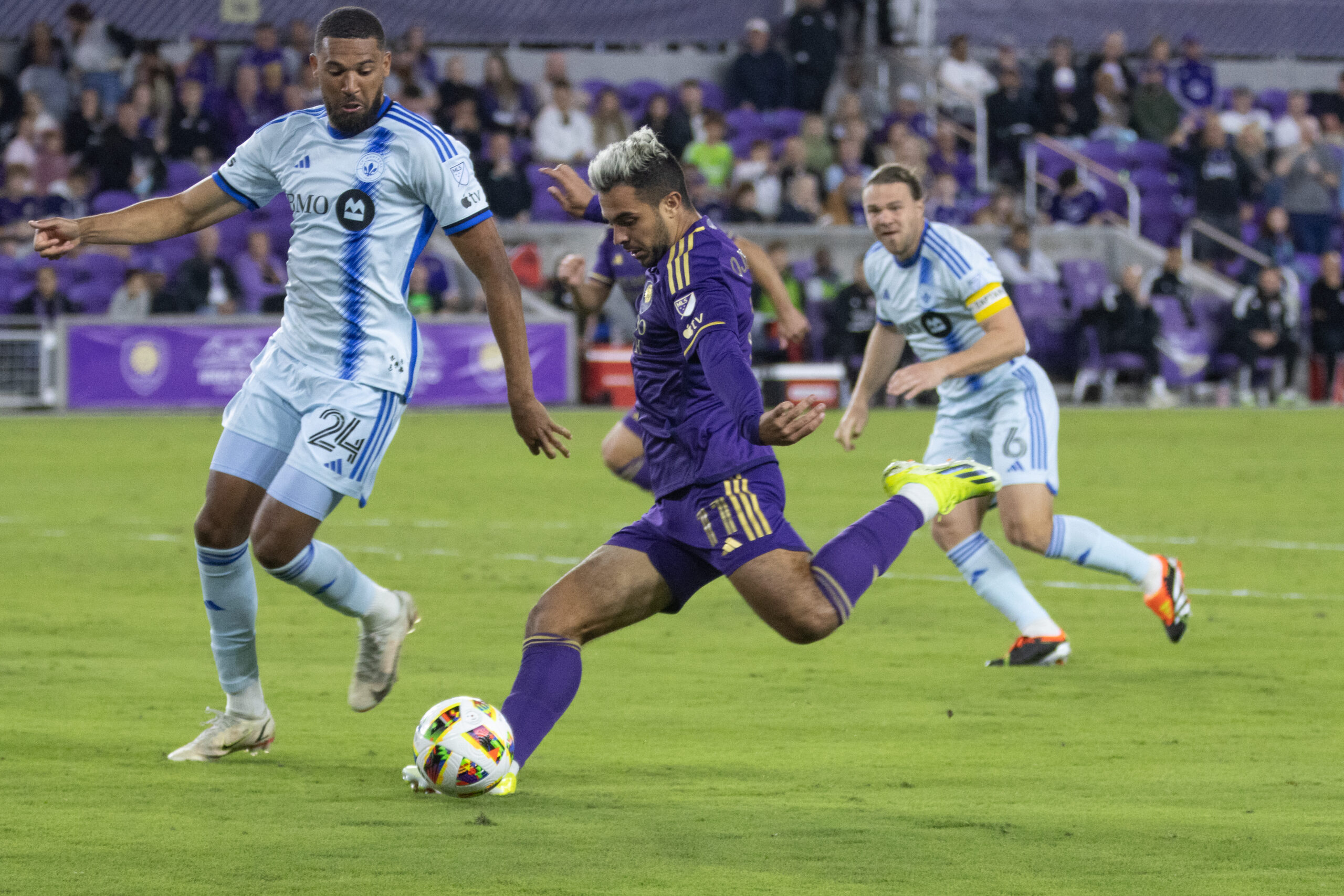
Orlando City plays CF Montreal in its first 2024 Leagues Cup match Friday night at Inter&Co Stadium. The Lions have been on a nice five-match undefeated streak during the regular season. Oscar Pareja loves tournament play and will certainly do everything he can to win this first match.
What does Orlando City need to do to defeat CF Montreal in the Don Garber Loves Money Cup…er, the Leagues Cup?
Stop the Canucks
Montreal has scored 34 goals in the regular season. However, only four of those goals came in the last five matches. Still, Orlando City seems to have trouble with this Montreal squad no matter where the match is played. As such, I want to see the defense that shut down D.C. United and Nashville SC, not the one that allowed multiple goals against the Chicago Fire.
That means Pareja needs to get the left back position sorted. I know he wants the Rafael Santos of 2023 to show up in 2024. So far, Santos has not found the good form from a year ago. Kyle Smith has been mostly good when he’s gotten time on the left, but he’s not the first choice.
There’s also the matter of David Brekalo. I think that Pareja kept rolling with Rodrigo Schlegel because the Lions went on a run as Brekalo was on international duty. Now, he can re-insert Brekalo in the starting spot since it won’t affect the MLS standings. Whether he does or not is the real question.
Smart Rotation
I mentioned the potential options on the back line, but there are other players who could use a rest, could recover from a knock, or need some additional playing time. Of course, Pareja tends to stick with what is working, so I’m not sure how much rotation we will see to start the match. He can, however, change up how he uses his substitutes.
If Pareja decides to sit Facundo Torres to allow him to be fully healthy, he still has Martin Ojeda playing well. Jeorgio Kocevski has been effective in his limited minutes, making him a good candidate to see some more time, even if he doesn’t start. Competitions like Leagues Cup can allow the team to heal up or rest up before the regular season starts back up.
Revive the Attack
Ramiro Enrique is on a scoring streak. I’m glad he is since Duncan McGuire is with the U.S. Olympic team, but Orlando City needs more. I think the Leagues Cup is a good opportunity to try anything and everything to get Luis Muriel better integrated into the Orlando City attack. He has the talent, but something hasn’t quite clicked yet.
This is also an opportunity for others to contribute some goals. It’s been a bit since Nico Lodeiro scored one. Ojeda could use a banger to get going again, and don’t forget Jack Lynn. Montreal has given up 49 goals in the regular season and has a -15 goal differential. The Lions need to take advantage of such a defense to spark some offensive production.
That is what I will be looking for Friday night. Let me know your thoughts in the comments below. Vamos Orlando!
-
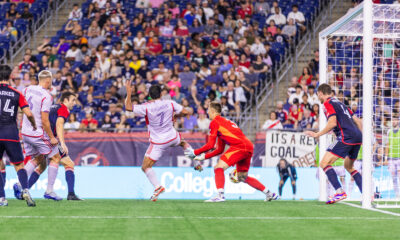
 Orlando City2 weeks ago
Orlando City2 weeks agoOrlando City vs. New England Revolution: Final Score 3-1 as Lions Finally Win at Gillette Stadium
-
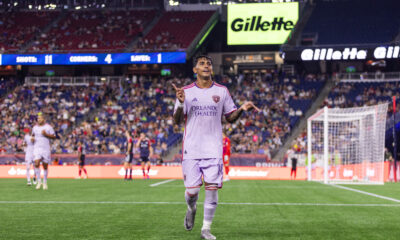
 Orlando City2 weeks ago
Orlando City2 weeks agoOrlando City vs. New England Revolution: Player Grades and Man of the Match
-
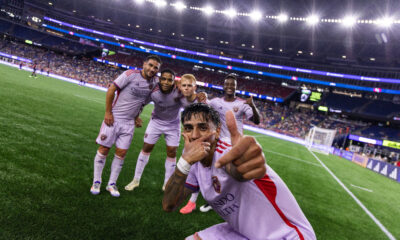
 Orlando City2 weeks ago
Orlando City2 weeks agoOrlando City vs. New England Revolution: Five Takeaways
-
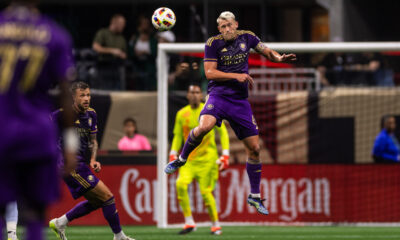
 Orlando City2 weeks ago
Orlando City2 weeks agoHow Should We Make Sense of Orlando City’s Defense in 2024?
-
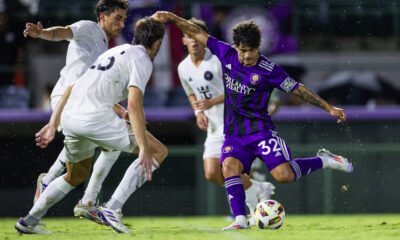
 Orlando City B2 weeks ago
Orlando City B2 weeks agoOrlando City B vs. Inter Miami II: Final Score 1-1 as OCB Draws Rivals and Claims a Second Point in Penalties
-
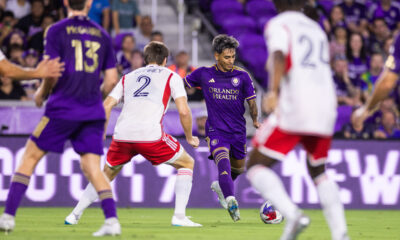
 Orlando City2 weeks ago
Orlando City2 weeks agoIntelligence Report: Orlando City vs. New England Revolution
-
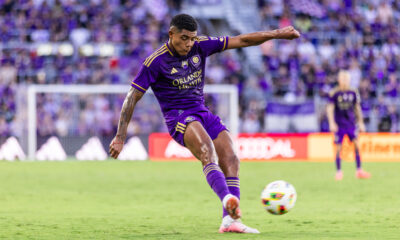
 Podcasts2 weeks ago
Podcasts2 weeks agoPawedCast Episode 432: New England Preview, OCB Set to Host Inter Miami II, and More
-
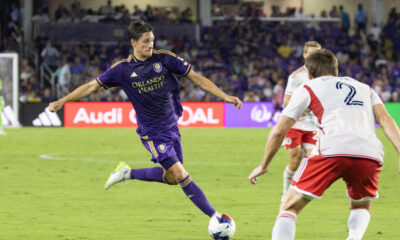
 Orlando City2 weeks ago
Orlando City2 weeks agoOrlando City at New England Revolution: Three Keys to Victory


